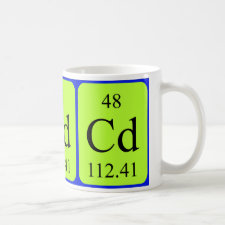
Authors: Yilmaz V, Yilmaz H, Arslan Z, Leszczynski J
Article Title: Novel Imprinted Polymer for the Preconcentration of Cadmium with Determination by Inductively Coupled Plasma Mass Spectrometry.
Publication date: 2017
Journal: Analytical Letters
Volume: 50
Issue: (3)
Page numbers: 482-499.
DOI: 10.1080/00032719.2016.1182544
Alternative URL: https://www.researchgate.net/publication/303504068_Novel_Imprinted_Polymer_for_the_Preconcentration_of_Cadmium_with_Determination_by_Inductively_Coupled_Plasma_-_Mass_Spectrometry
Abstract: A novel Cd(II)-imprinted polymer was prepared with chemical immobilization using N-methacryloyl-L-Histidine as a vinylated chelating agent for online solid-phase extraction of Cd(II) for determination by inductively coupled plasma mass spectrometry. The Cd(II)-monomer complex was synthesized and copolymerized through bulk polymerization method in the presence of ethyleneglycoldimethacrylate cross-linker. The resulting polymer was leached with 1.0 mol L-1 HNO3 to generate the cavities in the polymer for Cd(II) ions. The experimental conditions, including load pH, solution flow rate, and eluent concentration for effective sorption of Cd(II), were optimized using a minicolumn of the imprinted polymer. A volume of 5.0 mL sample 5 μg L-1 Cd(II) solution at pH 6.5 was loaded on the column at 2.0 mL min-1 using a sequential injection system followed by elution with 1.0 mL of 0.75 mol L-1 HNO3. The relative selectivity coefficients of the imprinted polymer for Cd(II) were 38.5, 3.5, 3.0, 2.5, and 6.0 in the presence of Cu(II), Ni(II), Zn(II), Co(II), and Pb(II), respectively. Computational calculations revealed that the selectivity of the imprinted polymer was mediated by the stability of Cd(II)-N-methacryloyl-L-Histidine complex which was more stable than commonly used monomers including 4-vinyl pyridine, methacrylic acid, and vinylimidazole. The detection limit and relative standard deviation were 0.004 μg L-1 and 3.2%, respectively. The method was validated by the analysis of seawater certified reference material (CASS-4) and successfully used for the determination of Cd(II) in coastal seawater and estuarine water
Template and target information: cadmium ion, Cd(II)
Author keywords: cadmium, chemical immobilization, Inductively coupled plasma mass spectrometry, Ion-imprinted polymer, Solid-phase extraction



Join the Society for Molecular Imprinting

New items RSS feed
Sign-up for e-mail updates:
Choose between receiving an occasional newsletter or more frequent e-mail alerts.
Click here to go to the sign-up page.
Is your name elemental or peptidic? Enter your name and find out by clicking either of the buttons below!
Other products you may like:
 MIPdatabase
MIPdatabase









